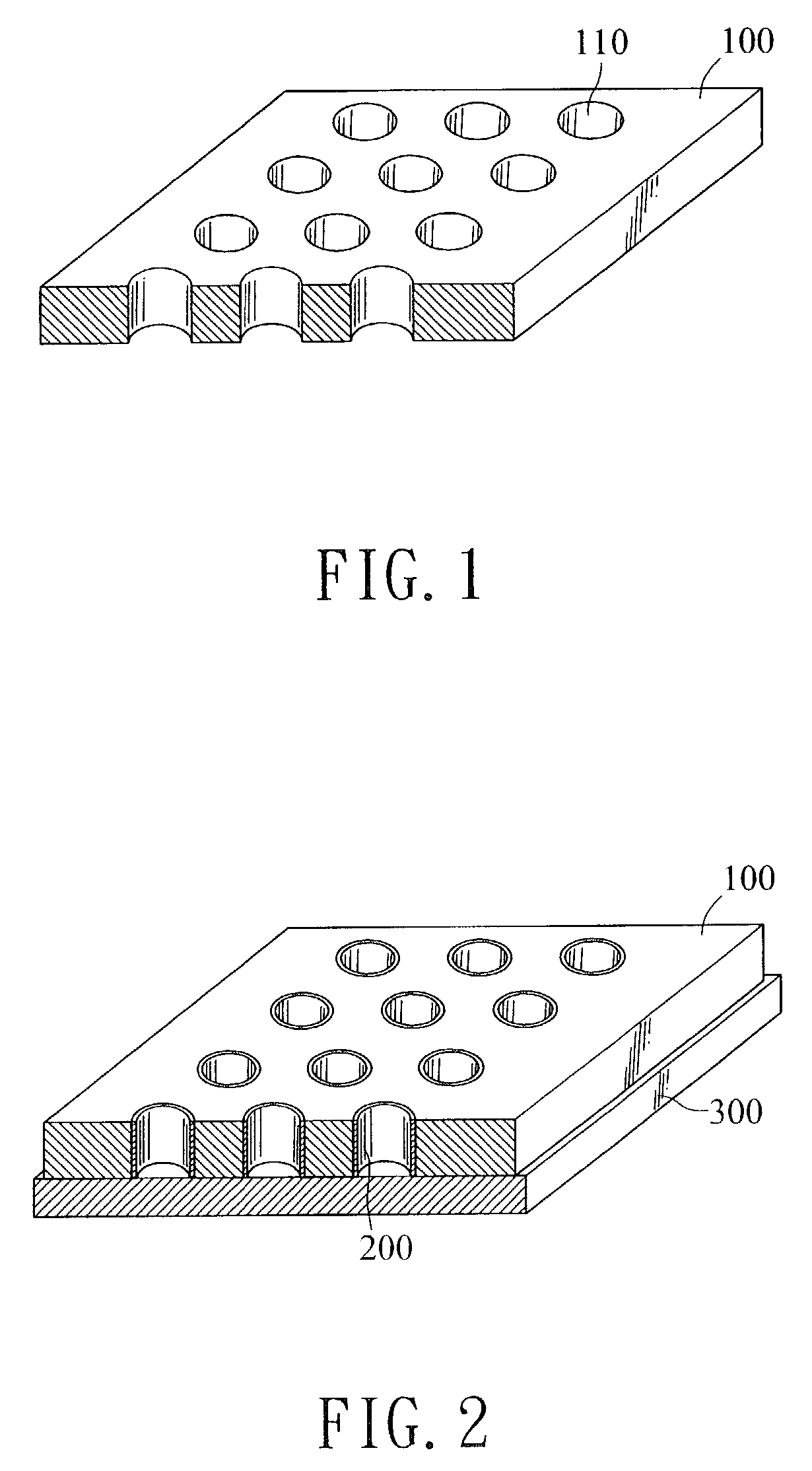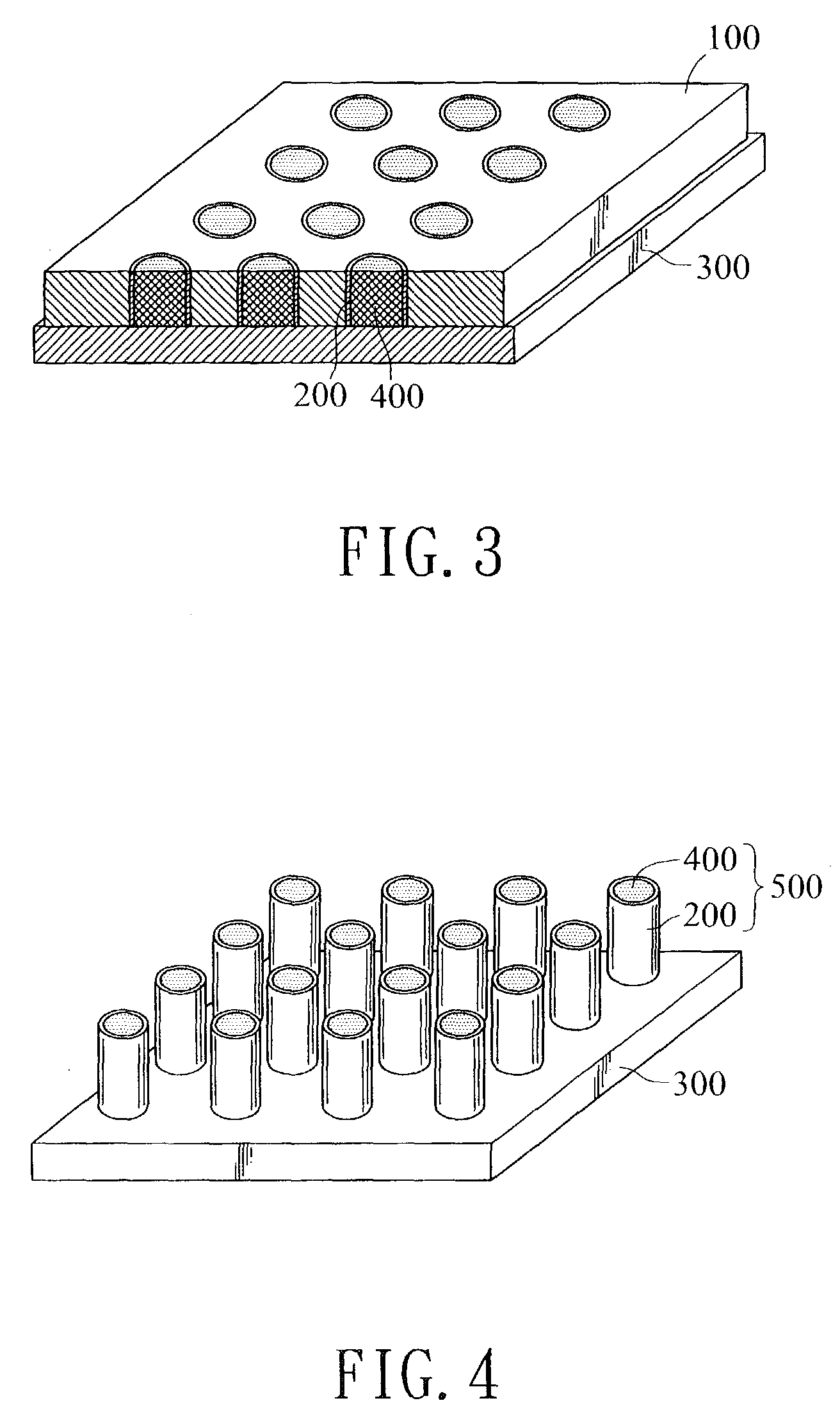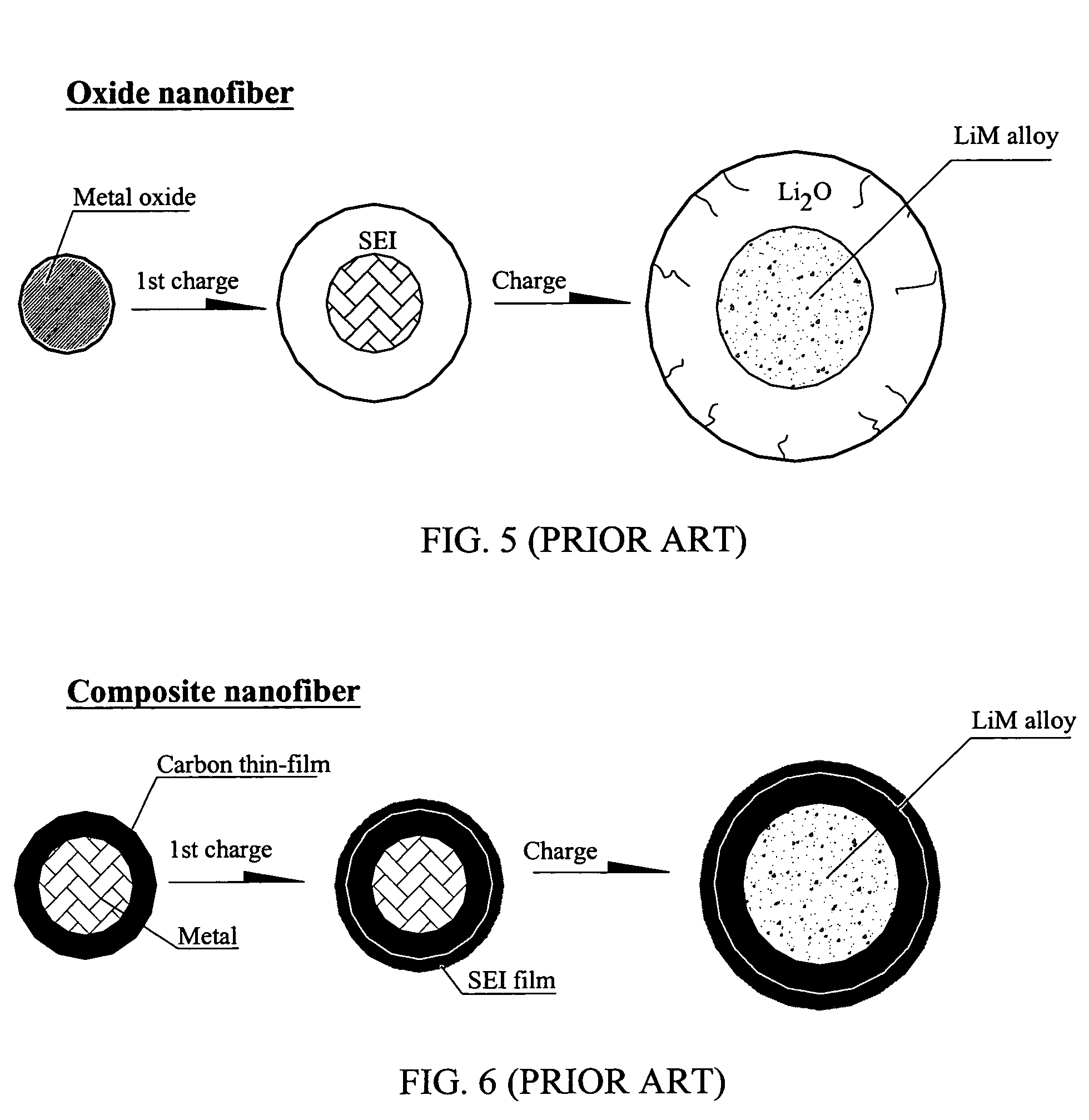Synthesis of composite nanofibers for applications in lithium batteries
a lithium battery and composite nanofiber technology, applied in the field of composite nanofiber synthesis, can solve the problems of limiting production and applications, high cost of fabrication process, and single material nanofibers that cannot meet the application requirements, and achieve precise control, high quality, and cost reduction
- Summary
- Abstract
- Description
- Claims
- Application Information
AI Technical Summary
Benefits of technology
Problems solved by technology
Method used
Image
Examples
Embodiment Construction
[0027]A process for fabricating composite nanofibers according to the invention is shown in FIGS. 1 to 4.
[0028]a) First, preparing a first tubular nanofiber. The first nanofiber is formed through a template 100 made of thin membrane of polycarbonate or anodic alumina and embedded with a first precursor (macromolecule, inorganic matter, metal oxide or carbon, etc) in the pores 110 of the template 100 through a method of sol-gel, chemical impregnation, electroless plating, electro-deposition or electron cyclotron resonance-chemical vapor deposition (ECR-CVD). The thickness of the hollow tubular nanofiber is controlled in accordance with the method and the parameters. For example, in sol-gel, the concentration, pH scale and soakage time are attended. In ECR-CVD, the vapor volume, deposition time and the kind of catalyst are attended. In electroless plating, the concentration, reaction time, pH scale and temperature are noticed. In electro-deposition, the voltage, current, time and pH s...
PUM
| Property | Measurement | Unit |
|---|---|---|
| aspect ratios | aaaaa | aaaaa |
| diameters | aaaaa | aaaaa |
| diameters | aaaaa | aaaaa |
Abstract
Description
Claims
Application Information
 Login to View More
Login to View More - R&D
- Intellectual Property
- Life Sciences
- Materials
- Tech Scout
- Unparalleled Data Quality
- Higher Quality Content
- 60% Fewer Hallucinations
Browse by: Latest US Patents, China's latest patents, Technical Efficacy Thesaurus, Application Domain, Technology Topic, Popular Technical Reports.
© 2025 PatSnap. All rights reserved.Legal|Privacy policy|Modern Slavery Act Transparency Statement|Sitemap|About US| Contact US: help@patsnap.com



